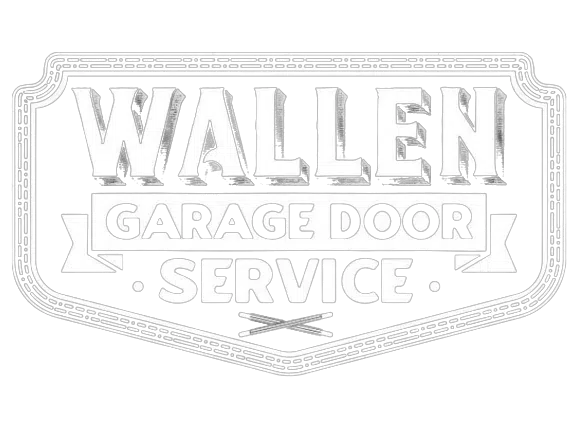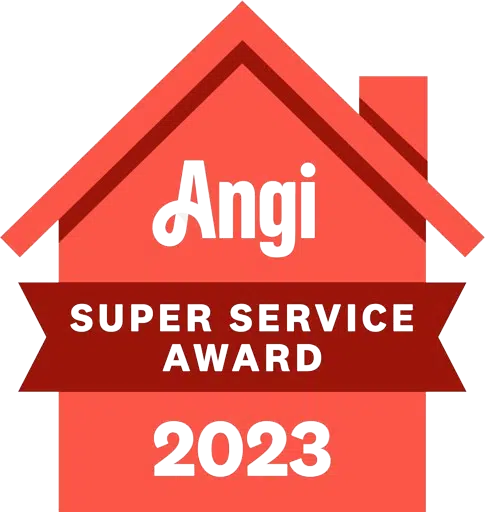Proper alignment of your garage door sensors is crucial for ensuring the safe and reliable operation of your garage door. Whether you’re a new homeowner or have been dealing with a finicky garage door for years, aligning these sensors can be a daunting task. Fortunately, with the right knowledge and a bit of patience, you can master this process and keep your garage door functioning smoothly and securely.
In this comprehensive guide, we’ll walk you through the process of aligning your garage door sensors like a pro, helping you maintain a smooth and secure garage door experience. We’ll cover everything from understanding the importance of these sensors to step-by-step instructions on how to properly align them. Whether you’re a DIY enthusiast or prefer to have a professional handle the job, this guide will equip you with the necessary information to make an informed decision.
By the end of this guide, you’ll have the confidence and know-how to tackle garage door sensor alignment with ease. Say goodbye to frustrating garage door malfunctions and hello to a seamless, worry-free experience every time you enter or exit your garage.
Understanding the Purpose of Garage Door Sensors
Garage door sensors are an essential safety feature in modern homes and businesses. They are designed to prevent accidents and protect both people and property from potential harm. These devices, also known as photo-eye sensors, are installed on either side of the garage door opening and work by emitting an invisible beam of light that creates a safety barrier across the doorway.
When an object or individual interrupts this beam, the sensors immediately detect the obstruction and send a signal to the garage door opener. This signal triggers an automatic response, causing the garage door to either reverse its motion or stop immediately, preventing any further movement that could result in a crushing or trapping incident. Proper alignment of these sensors is crucial to ensure their effectiveness in detecting obstructions and activating the necessary safety protocols.
Signs That Your Garage Door Sensors Need Alignment
There are several telltale signs that your garage door sensors may be misaligned:
- The garage door doesn’t close completely or reverses unexpectedly.
- The sensors’ indicator lights are not illuminating or are blinking erratically.
- The garage door opener doesn’t respond when an object is placed in the path of the sensors.
- The garage door opener doesn’t respond when you wave your hand or walk through the sensor’s beam.
If you notice any of these issues, it’s time to take a closer look at your garage door sensors and realign them.
Safety Precautions Before Aligning Garage Door Sensors
Before attempting to align your garage door sensors, it’s crucial to take the necessary safety precautions:
- Disconnect the power to your garage door opener by unplugging it from the power source or turning off the circuit breaker.
- Ensure the garage door is in the fully open position to provide easy access to the sensors.
- Wear appropriate protective gear, such as safety glasses and gloves, to prevent any potential injuries.
- Clear the area around the garage door of any obstructions or debris that could interfere with the sensor alignment process.
By following these safety guidelines, you’ll minimize the risk of accidents and ensure a smooth and successful sensor alignment.
Step-by-Step Guide on Aligning Garage Door Sensors
- Locate the sensors: Identify the two sensors, typically located a few inches above the floor on either side of the garage door opening.
- Inspect the sensors: Visually inspect the sensors for any damage, dirt, or obstructions that could be interfering with their operation.
- Clean the sensors: Use a soft, dry cloth to gently wipe down the sensors and their lenses, ensuring they are free of any debris or buildup.
- Check the sensor alignment: Observe the indicator lights on the sensors. If the lights are not illuminated or are blinking erratically, the sensors are likely misaligned.
- Adjust the sensor position: Loosen the screws or brackets that hold the sensors in place, and carefully adjust the position of the sensors until the indicator lights are steady and illuminated.
- Secure the sensors: Once the sensors are properly aligned, tighten the screws or brackets to lock the sensors in place.
- Test the sensors: Obstruct the sensor beam by placing an object in the path of the sensors and observe the garage door’s response. The door should automatically reverse or stop.
- Fine-tune the alignment: If the door does not respond as expected, make minor adjustments to the sensor position until the desired response is achieved.
By following these steps, you’ll be able to precisely align your garage door sensors and ensure their proper functioning.
Common Mistakes to Avoid During the Alignment Process
- Overtightening the sensor brackets: This can damage the sensors or cause them to become misaligned again over time.
- Failing to clean the sensor lenses: Dirt and debris on the sensor lenses can interfere with the infrared beam, leading to misalignment.
- Ignoring the indicator lights: The sensor indicator lights are a crucial visual cue for proper alignment. Don’t disregard them.
- Rushing the alignment process: Take your time and make gradual adjustments to ensure the sensors are precisely aligned.
- Neglecting to test the sensors: Skipping the testing step can lead to issues that may not be apparent until the door is in use.
By being mindful of these common pitfalls, you’ll increase your chances of achieving a successful and long-lasting garage door sensor alignment.
Testing the Alignment of Your Garage Door Sensors
After aligning your garage door sensors, it’s essential to thoroughly test their functionality to ensure a proper and safe installation. Here’s how you can test the sensor alignment:
- Place an object, such as a broom handle or a piece of wood, in the path of the sensor beam. The garage door should automatically reverse or stop.
- Walk through the sensor beam yourself. The garage door should also reverse or stop in response to your presence.
- Observe the sensor indicator lights. They should be steady and illuminated, indicating proper alignment.
- Operate the garage door through its full range of motion, from fully open to fully closed, to ensure the sensors are working correctly throughout the door’s travel.
If the sensors fail any of these tests, go back and make further adjustments to the sensor positions until the desired response is achieved.

Troubleshooting Tips for Persistent Alignment Issues
If you’re still experiencing issues with your garage door sensors after several alignment attempts, consider the following troubleshooting tips:
- Check for obstructions: Ensure there are no objects, such as boxes, shelves, or vehicles, blocking the sensor beam.
- Inspect the sensor wiring: Examine the wiring connecting the sensors to the garage door opener for any damage or loose connections.
- Verify the sensor power supply: Ensure the sensors are receiving the correct power supply from the garage door opener.
- Replace the sensors: If the sensors are damaged or malfunctioning, consider replacing them with new ones.
- Consult the manufacturer: Refer to the manufacturer’s instructions or contact their customer support for additional guidance.
By addressing these potential issues, you’ll be able to resolve any persistent alignment problems and restore the proper functioning of your garage door sensors.
Importance of Regular Maintenance for Garage Door Sensors
Maintaining the alignment of your garage door sensors is not a one-time task. Over time, the sensors can become misaligned due to various factors, such as vibrations, temperature changes, or physical disturbances.
To ensure the continued safe operation of your garage door, it’s recommended to:
- Inspect the sensors regularly (at least once a year) and realign them as needed.
- Clean the sensor lenses periodically to prevent any buildup of dirt or debris.
- Check the sensor wiring for any signs of damage or wear and replace it if necessary.
- Keep the area around the sensors clear of obstructions to maintain a clear sensor beam.
By incorporating these maintenance practices into your routine, you’ll prolong the life of your garage door sensors and maintain a reliable and secure garage door system.
Hiring a Professional for Sensor Alignment
While aligning garage door sensors can be a DIY project, some homeowners may prefer to have a professional handle the task. Hiring a qualified garage door technician offers several benefits:
- Expertise: Experienced technicians have the knowledge and skills to quickly diagnose and resolve any alignment issues.
- Safety: Professionals have the proper tools and training to safely work on your garage door system, reducing the risk of injury or further damage.
- Warranty: Many garage door companies offer warranties on their work, providing you with peace of mind and protection.
- Convenience: Letting a professional handle the alignment process saves you time and effort, allowing you to focus on other home maintenance tasks.
If you’re unsure about your ability to properly align your garage door sensors or simply want the job done right the first time, consider contacting a reputable garage door service provider in your area.
Conclusion: Enjoy a Properly Functioning Garage Door with Aligned Sensors
Ensuring the proper alignment of your garage door sensors is crucial for the safe and efficient operation of your garage door system. This guide provides expert insights and step-by-step instructions to help you tackle this task with confidence and ease.
Properly aligned sensors not only prevent potential accidents but also extend the lifespan of your garage door components. By prioritizing safety and following the recommended steps, you’ll be able to fine-tune your sensors, ensuring seamless opening and closing every time. However, if you encounter any difficulties or have concerns, it’s always advisable to seek professional assistance from a certified technician to avoid potential risks or costly repairs.
If you’re experiencing issues with your garage door sensors or need help with the alignment process, don’t hesitate to contact the experts at Wallen Garage Doors. Our experienced garage door repair in Hampton Roads, VA technicians are ready to assist you and get your garage door system back in top shape. Call us today to schedule a service appointment!
Frequently Asked Questions
1. How often should I align my garage door sensors?
It’s recommended to inspect and realign your garage door sensors at least once a year, or whenever you notice any issues with their operation.
2. What should I do if the sensors are not responding at all?
If the sensors are not responding and the indicator lights are not illuminated, check the power supply and wiring connections. If the issue persists, the sensors may need to be replaced.
3. Can I adjust the sensors myself, or should I call a professional?
Aligning garage door sensors can be a DIY project for handy homeowners, but if you’re unsure or encounter persistent issues, it’s best to call a professional garage door technician.
4. How do I know if the sensors are properly aligned?
The main indicators of proper sensor alignment are steady, illuminated indicator lights and the garage door’s correct response to obstructions in the sensor beam.
5. What can happen if my garage door sensors are not properly aligned?
Misaligned sensors can cause the garage door to reverse unexpectedly, fail to close completely, or not respond to obstructions, which can lead to safety hazards and potential damage to the door or objects in its path.






